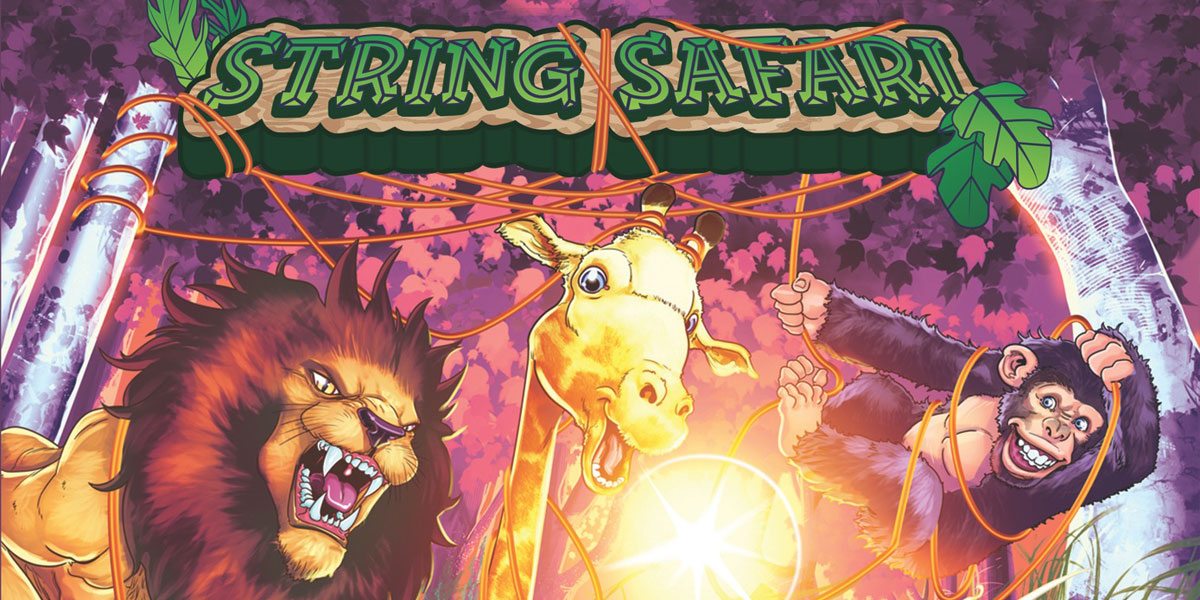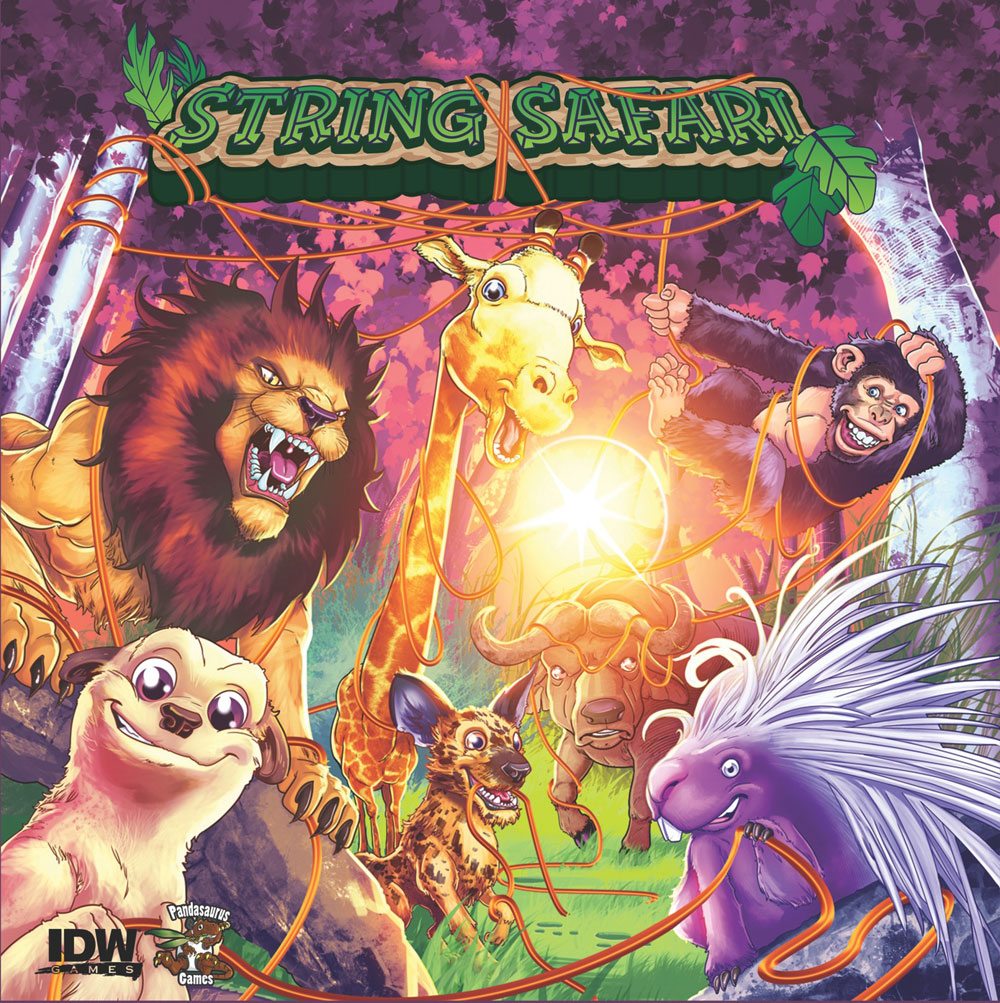The wildlife reserve is filled with all sorts of animals and things are total chaos. So you, the zoologists, have been brought in to corral the animals with your handy lasso. Welcome to String Safari!
At a glance: String Safari (a new edition of String Savanna) is for 3 to 5 players, ages 10 and up, and takes about half an hour to play. It retails for $24.99. I’ve played with younger kids (age 8) and it works fine, though the game can be a bit fiddly and you’ll need patience laying out the strings.
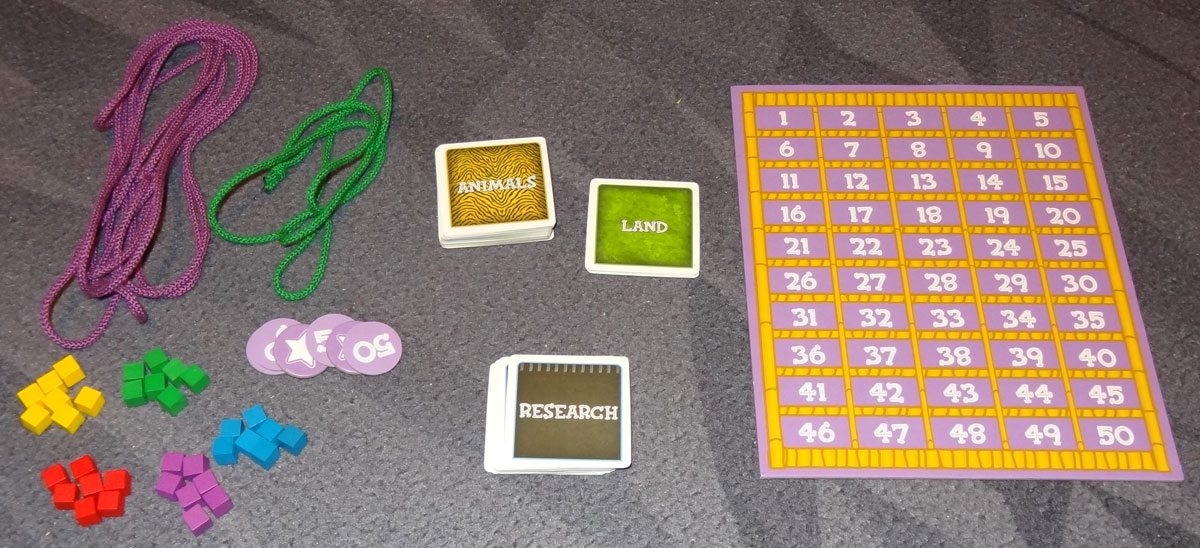
Components:
- 37 Animal cards
- 7 Land cards
- 30 Research cards
- 1 Field string
- 1 Research string
- 1 score tracker
- 6 50-point tokens
- 35 Research markers (7 each in 5 colors)
All of the cards are small square cards, which is good for how they function in the game, but can make them hard to shuffle. Research cards show how many points some characteristic is worth, and may have some additional requirements, plus a point value. Some Research cards require the Research string to touch the Field string, and some require you to include a Rocky Area.

The animal cards each have a number of characteristics: activity, food, family, and points. “Activity” represents when the animal is active: night, day, or evening. “Food” can be carnivore, herbivore, or omnivore. “Family” is ungulates, felines, canines, primates, and other. The color of the card’s border corresponds to its family. It does bother me a little that four of the families are well-defined, and the last is “other,” which includes the elephant, porcupine, meerkat, zebra, and a few others. In other words, you probably don’t want to rely on String Safari to teach your kids biology.
The Field string is a long purple string tied in a loop, and the Research string is a smaller green string, also tied in a loop. They are round cotton strings, kind of what you might find as a drawstring, but not too thick. Since the game involves placing the Research string on the table, encircling various cards, it’s very easy for cards (and the Field string) to shift around while you’re playing. I’ve been playing on my Quiver Gaming Mat, which helps keeps things from shifting too much.
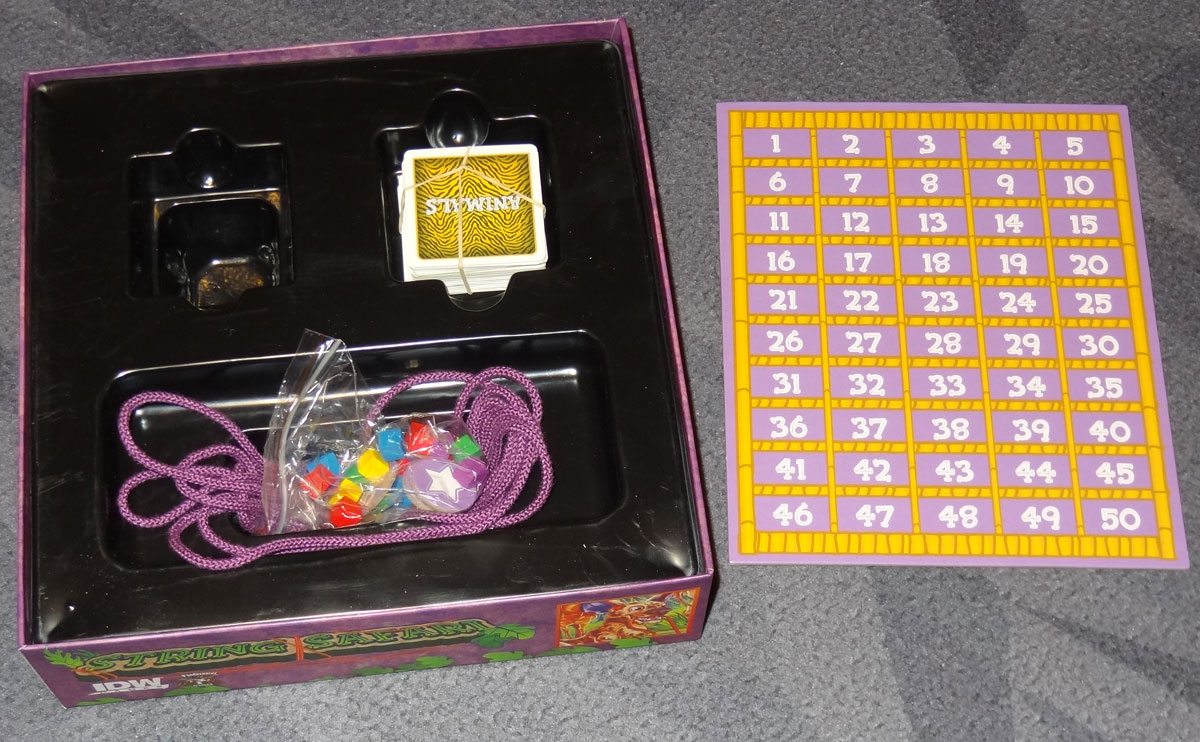
And, although this doesn’t affect gameplay, I always mention when I feel a box is much bigger than necessary. String Safari‘s components could fit in a much smaller box. In fact without the scoreboard and rulebook, you could fit it into a pocket, but the game comes in a medium-sized square box.
How to Play
The goal of the game is to score the most points by lassoing
To set up, each player gets the cubes of their color–the exact number depends on the number of players–and sets one aside near the scoreboard. The Field string is set up on the table–you can make odd shapes or just do a big loop, but it shouldn’t touch or overlap itself anywhere. Shuffle the Land cards and place all of them randomly throughout the Field. Then shuffle the Animal cards and randomly place 16 of them throughout the field. None of the cards should touch the Field string or other cards. Shuffle the Research tiles and turn 5 of them face-up in a row outside the Field. The rest are left as a draw deck.
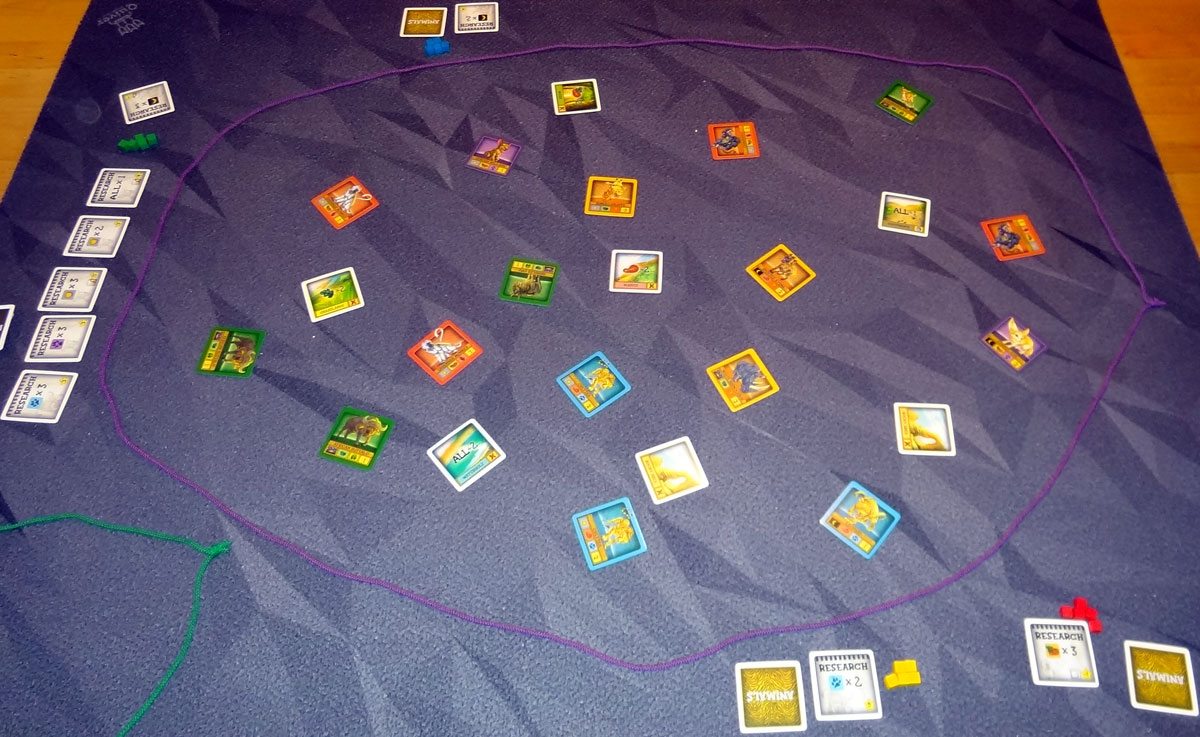
There will be a Preparation round, and then you’ll play a number of rounds based on the number of players (basically one round for each cube you have).
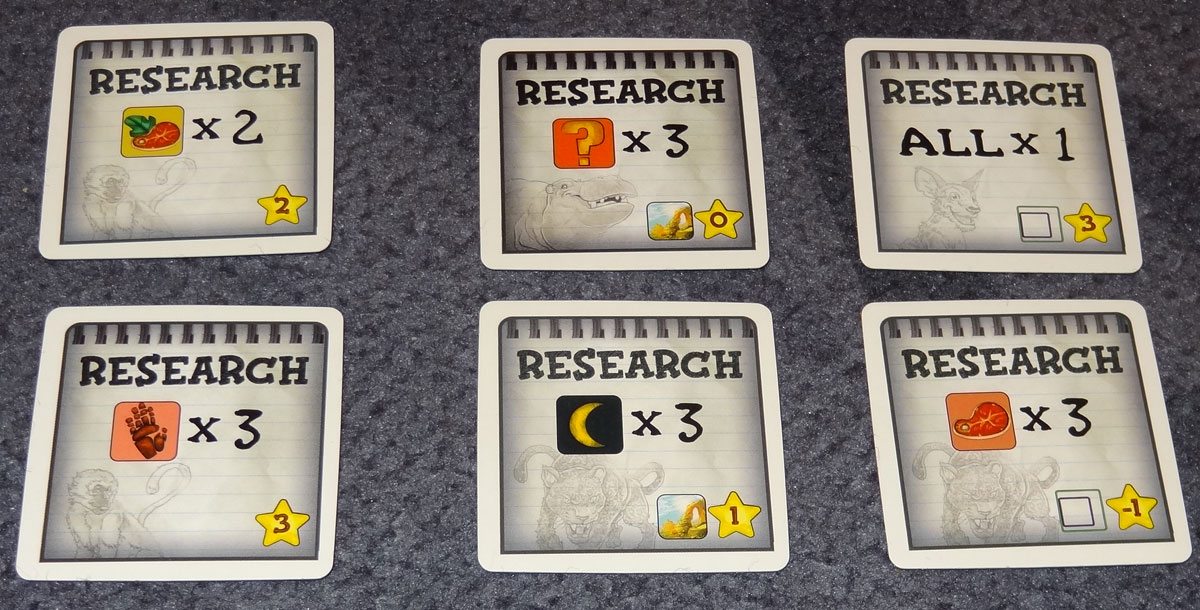
During the Preparation round, each player draws an animal card from the deck, and then chooses a Research card–either a face-up card or one from the deck. Any time a face-up card is taken, it is replaced with one from the deck. The Animal card is kept hidden from other players, but the Research card is placed face-up where everyone can see it. And now the real game begins.
On your turn, first you place your Animal card into the Field–anywhere as long as it doesn’t touch the Field string or any other cards.
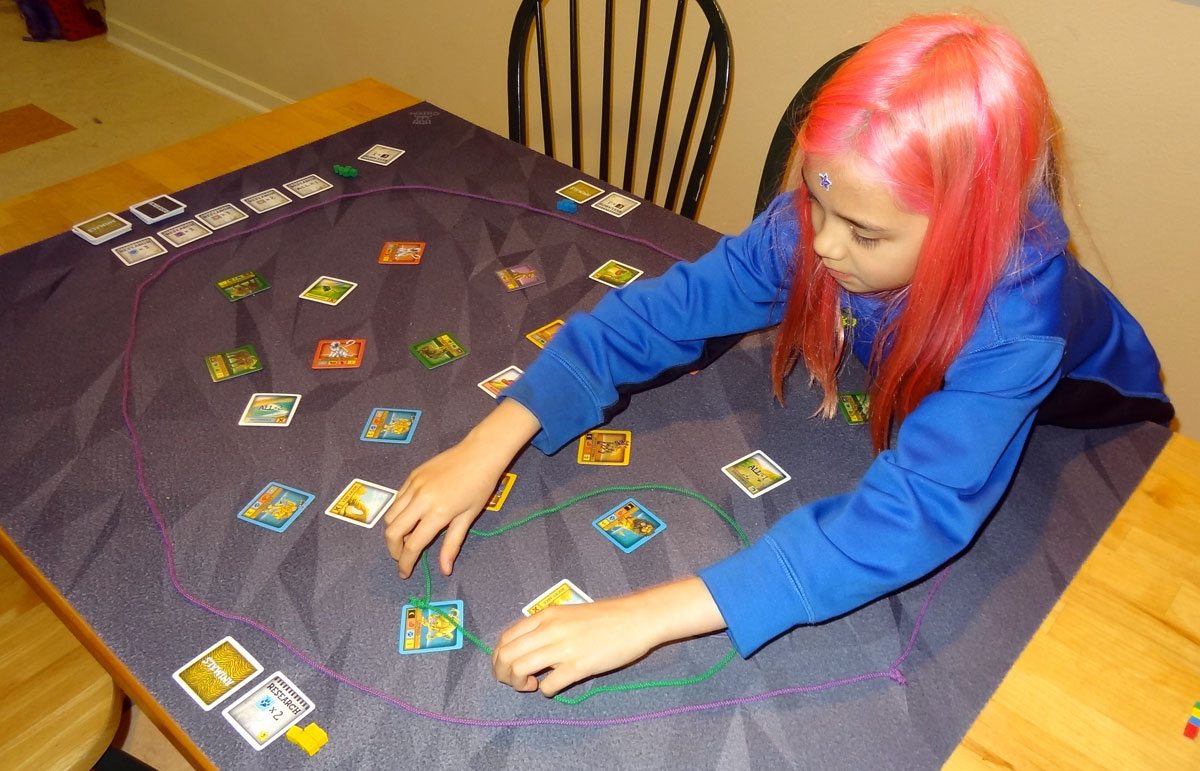
Then you use the Research string to lasso some cards. Your current Research card shows what you will get points for–it may be for felines, or nocturnal animals, or herbivores. You place the Research string so that it’s not crossing any cards or itself, and then count up your points. Then, you may place one of your markers on a card you’ve encircled with the lasso–usually an animal–that doesn’t have a marker already. Research markers do two things: first, you’ll get points for that animal at the end of the game; second, nobody else counts that card when they enclose it, regardless of their own Research card.
Then you remove the Research string, draw a new Animal card, take a Research card (and place it on top of your previous one), and pass the string to the next player. On the last round, you won’t take new cards.
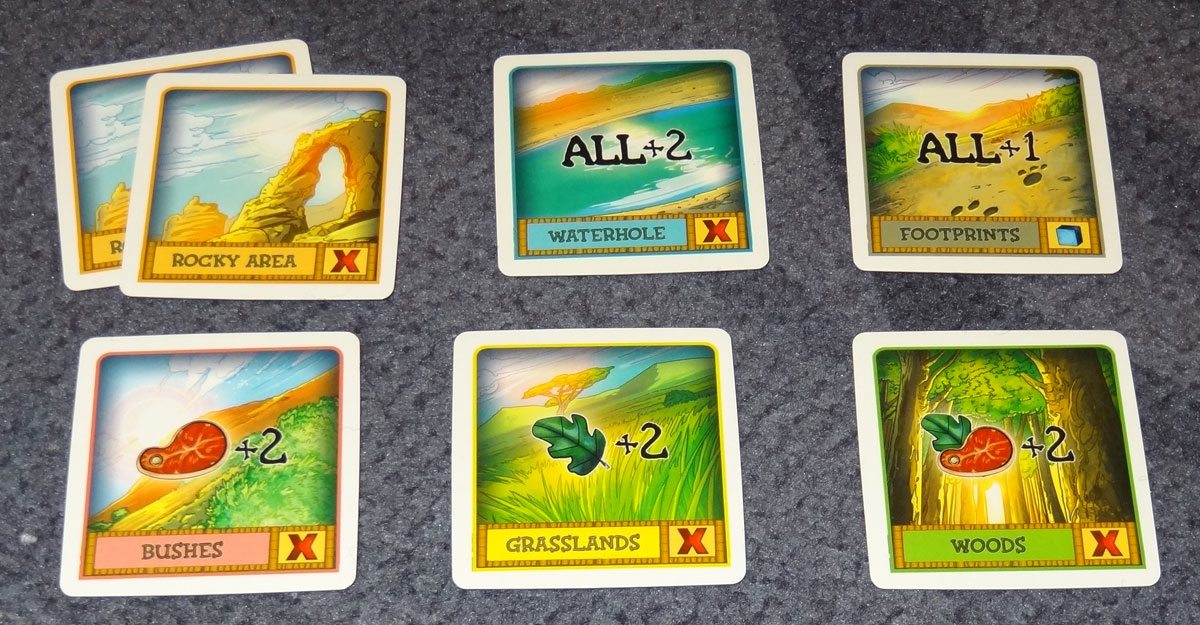
The Land cards are scattered throughout the Field. Some of them offer bonus points if you enclose them–there are three that offer +2 points if you also encircle the right type of animal, and two that just give you flat bonus points. The Footprints has a special feature–it’s the only one that you can place a Research marker on. If you do, then you get to draw 2 Animal tiles this round, both of which must be placed on your next turn.
Finally, the Rocky Area cards don’t give you any bonus points, but there are Research cards that require you to include them in your Research string.
After the requisite number of rounds, the game ends. You score points for the Animal cards in the field with your markers on them, and you also score points for all of the Research cards you have. The player with the highest score wins! (No tie-breaker is given.)
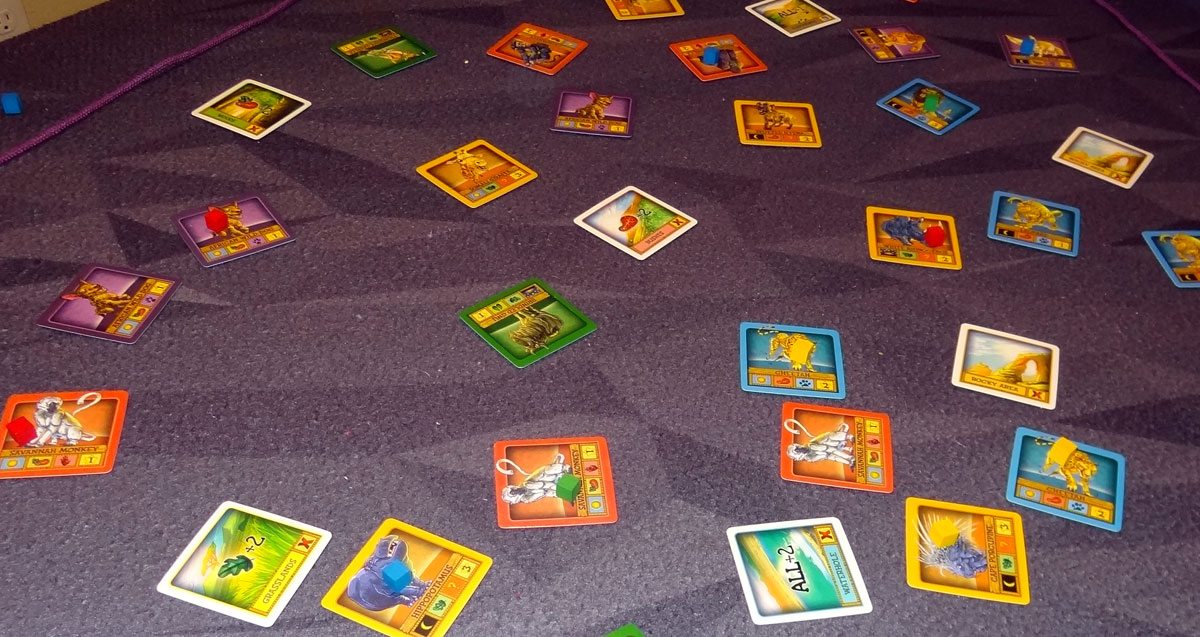
The Verdict
Designer Hisashi Hayashi has another string-based game called String Railway. That one has been on my “to play” list for a while, so when I heard about String Safari, I was pretty excited to try it out. It’s not at all the same game, but the combination of cards and strings does give both games similar DNA.
Despite some quibbles about the categorization of animals and the box size, I’ve enjoyed playing String Safari. It looks like a silly game at first, but there are actually some fun tactics that emerge as you play. One thing I should note is that it’s not a game you can be too nitpicky about while playing; cards are going to shift a bit while somebody is playing the Research string, and you should decide ahead of time how strict you’re going to be about whether the loop is legally placed. I’ve generally played with a little bit of fudge factor, because trying to stretch the loop to its limit tends to shift the cards around even more.
There are several decisions you get to make throughout the game: your choice of Research card will be influenced by both the current state of the Field and the Animal card you just drew (and will get to place next turn). Plus, because each Research card is worth points (or negative points) at the end of the game, you may need to balance scoring with the Research string vs. the value of the card itself. When you place the Animal card, you may want to place it somewhere so you can lasso it along with whatever else you’re going for–or you might use it to block a prime spot that you anticipate an opponent will want to use.

Lassoing animals with the Research string requires you to find a good spot that will maximize your score, but you need to take into account that you don’t score for cards with other players’ markers on them. As the game progresses, there will be more and more cards with markers on them.
There are a number of ways to score points, but not so many that it’s overwhelming. I liked the fact that you scored points for animals you lassoed right away, but the Research card and the markers are only scored at the end of the game–you can get a rough idea of who’s ahead, but you don’t know for sure until all the points are tallied up at the end.
Thematically, the game is a little odd. According to the little story at the front of the rulebook, you’re supposed to be corralling the animals and grouping them by habitat, diet, and so on–which explains why you get points for the number of felines or carnivores or whatever that you lasso. However, once you’ve looped them and gotten your points, you just leave them there where they were–you’re not really organizing them at all in the field. So the story doesn’t really add up to much, and if you try to read too much into it you’ll probably just get confused.
Still, thematic issues aside, String Safari is quite different from most other board games I’ve played and I’ve had fun playing it. I always like finding games that use interesting mechanics, so I got a kick out of using a string to lasso animals. It can be a little fiddly, so if you’re overly concerned about precision you may not enjoy it quite as much. Overall, I think it’s a nice casual game that could work well with both kids and adults–though mind your elbows while you reach across the table.
String Safari is available from Amazon or check at your friendly neighborhood game store.
Disclosure: I received a review copy of this game.
